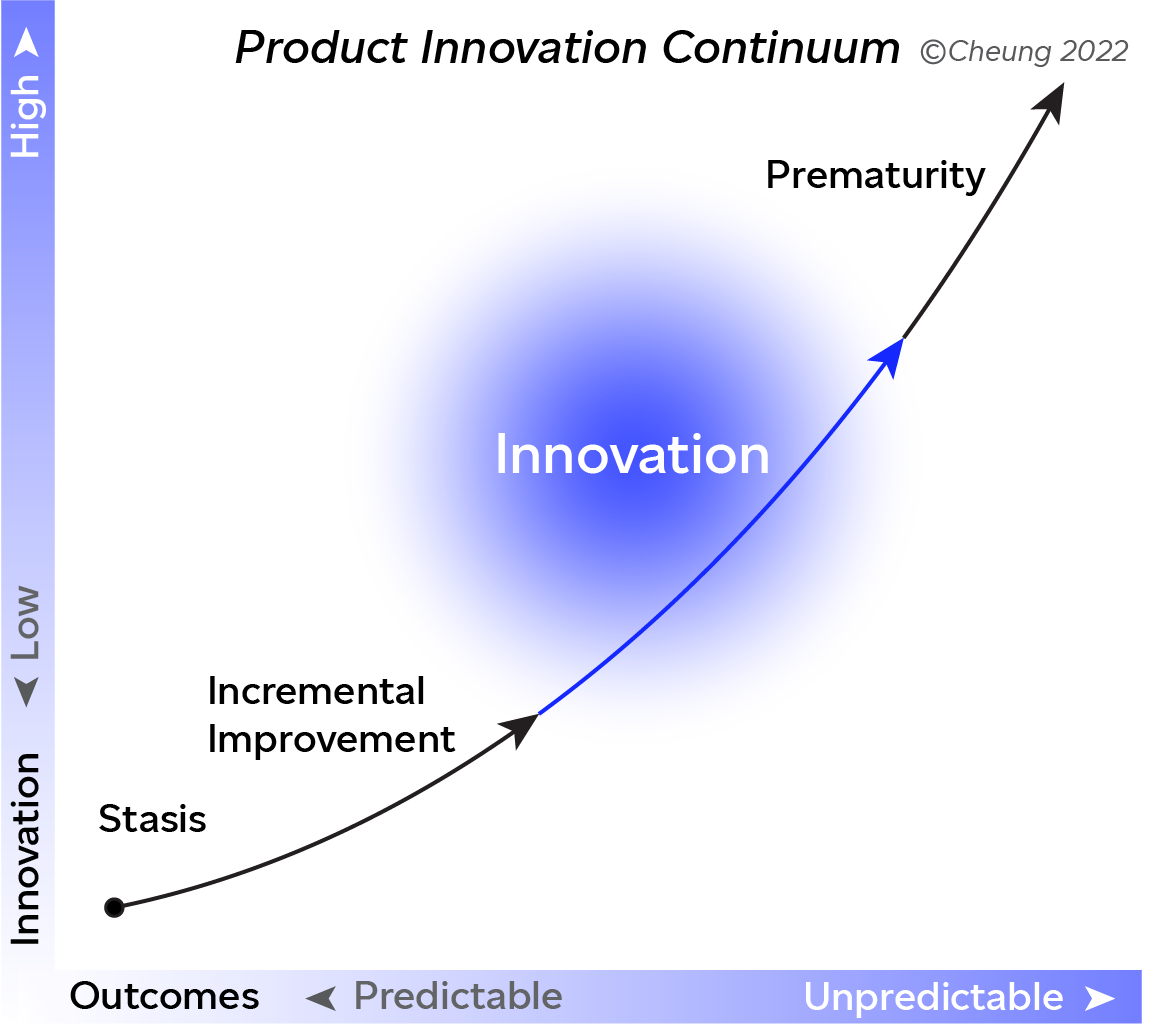The integration of innovation practices in product-led businesses is a relatively new phenomenon that presents a challenge to traditional ways of working. Many companies claim to be “innovation-led” but very few can walk the talk let alone do it well. What are the barriers to implementing effective innovation programs and how might we overcome them?
Innovation lies beyond the fringes of what we know about our product designs in development. The elusive nature of innovation is what charges a new product with the potential to disrupt the status quo (and transform a company’s fortunes). On the flipside, the unpredictable nature of the work makes it a challenge for leadership teams to support with absolute conviction. Add to this the difficulty of getting diverse teams within a business to pull in the same direction on product development, is it any wonder why innovation programs are difficult to execute?
At the heart of the problem lies a duality of work cultures that exists in most integrated product-led businesses with a desire to practise innovation. On one end of that spectrum, are those used to analytical ways of working and on the other, those used to an intuitive approach. Typically, on the analytical side sit traditional business leads and technocrats running on meticulously kept spreadsheets, quarterly reports and KPI’s. On the intuitive end are the industrial designers, UX designers and creatives (hired to ‘do’ the innovation work) coming from work environments active in brainstorming, drawing and prototyping.
Whereas business and technical performance targets can be tracked and predicted with precision, innovation work is inherently fuzzy, and the outcomes are unpredictable. Analysts seek definitive, predictable outcomes by controlling inputs and are driven by data. Intuitive types conduct much of their work on feeling, observation and experience and if done well, the outcome of innovation is a combination of surprise and delight. To illustrate the disconnection between the two paradigms, the following is based on a real exchange I had with a colleague years ago:
“I know we need innovation, Danny but I just can’t see where you would put the innovation in this product!” Will* said, defeated. I replied offering little relief.
“Well Will, if you knew what the innovation was right now, it’s probably not an innovation!” (*fictitious)
The effect of this separation is an inverse relationship between predictability and innovation as illustrated in the Product Innovation Continuum. The more you can predict the outcome of a design in development, the more likely the improvements will be incremental, whereas the more unpredictable the outcome, the higher the degree of innovation.
If you’re a business or R&D leader conditioned into working with data and measurable targets for the best part of your career, putting faith in the unfamiliar intuitive methods employed by industrial designers and their like is understandably an enormous leap! In my career I’ve worked with leaders on both sides of the spectrum; from business leaders with the humility to empower experts in their fields to those who would rather cling to the familiar (even at the expense of real opportunities in product innovation) than lean into the discomfort and embrace the practices of innovation.
So how do integrated, product-led businesses transcend this internal tension and get forward traction with innovation? I would suggest the answer is a combination of education and surrender. Finding that synchronicity requires traditional business types to surrender some of their inbuilt resistance to the unknown and for innovation teams to grease the wheels of collaboration and understanding with education. Incumbent business leaders must create the conditions for innovation to occur by releasing product development opportunities to innovation teams from the outset of a project. Taking this critical step into the unknown will not only empower the Innovators to do their work but by virtue of their intuitive conditioning they will bring about the level of internal collaboration required for a truly ‘innovation-led’ business to succeed. Only by living the product development process in mutual collaboration will the greatest amount of progress be made.


